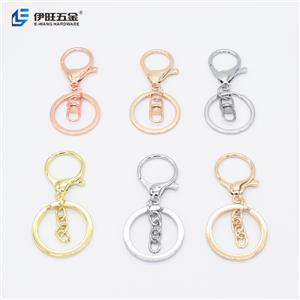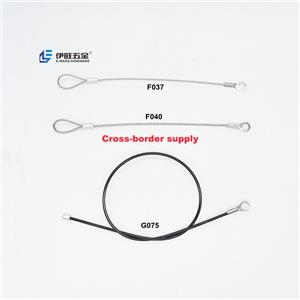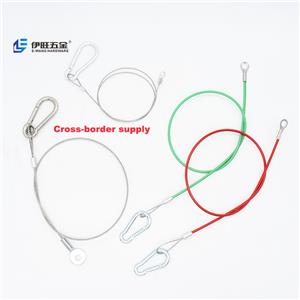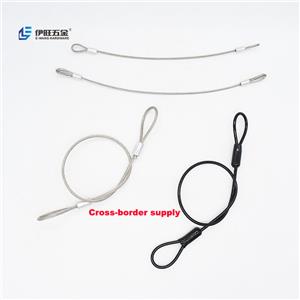The Unassuming Essential: A Deep Dive into the World of the Wire Keychain
**I. From Humble Beginnings: A Brief History of Key Retention**
To appreciate the wire keychain, one must first understand the evolution of key carrying. The earliest keys, large and ornate objects from ancient Egyptian and Roman times, were often carried on hooks or rings, signifying status and wealth. The medieval period saw the rise of the chatelaine, a decorative belt hook from which chains held keys, household tools, and sometimes even seals. These were functional but cumbersome.
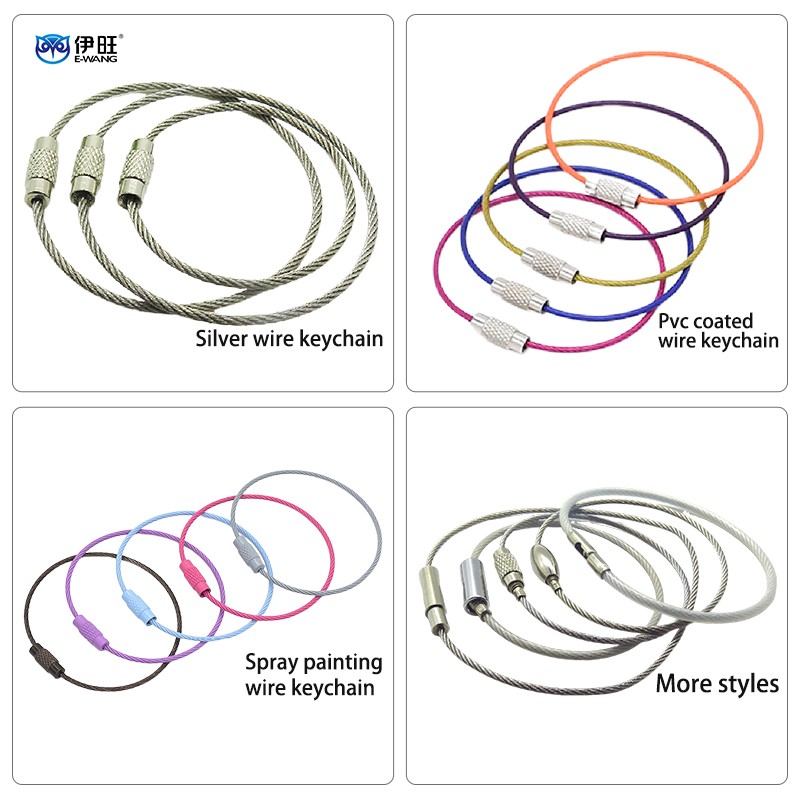
#### **II. The Anatomy of Simplicity: Deconstructing the Wire Keychain**
At its core, a wire keychain is breathtakingly simple. It consists of a single, continuous piece of wire formed into a specific shape. However, this simplicity belies a carefully considered design:
* **The Lanyard Loop:** This is the primary feature, a small, often teardrop-shaped loop at one end designed to be easily attached to a split-ring, a carabiner, or another fastener. Its closed nature ensures security.
* **The Spring Mechanism:** The heart of the classic wire keychain. This is a coiled section of wire that functions as a spring, providing tension. It allows the keychain to be extended and then retracts back to a compact form, preventing dangling and tangling.
* **The Hook:** The opposite end from the lanyard loop. This is the part that attaches to the user. It is typically a larger, open hook designed for easy one-handed operation to clip onto a belt, bag, or loop. The tip is often bent inward or has a specialized end to prevent snagging and to enhance security.
* **The Material:** The choice of material is critical. Most modern wire keychains are made from music wire (a high-carbon steel), stainless steel, or sometimes zinc-plated steel for corrosion resistance. The wire must possess three key properties:
1. **High Tensile Strength:** To resist breaking under pulling stress.
2. **Excellent Springback:** The ability to return to its original shape after being deformed, which is essential for the spring mechanism.
3. **Ductility:** The capacity to be bent into shape during manufacturing without cracking.
The genius of the design is in the interplay of these elements. The spring mechanism absorbs shock and strain, the sturdy lanyard loop provides a failsafe connection point, and the hook offers effortless usability. It is a system engineered for reliability.
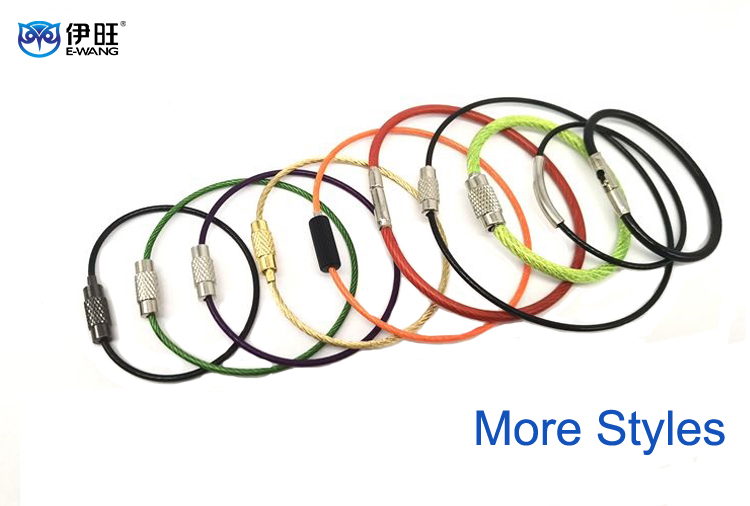
#### **III. The Art of the Coil: Manufacturing the Wire Keyring**
The production of a wire keychain is a fascinating dance of precision engineering and automation. While methods vary by manufacturer and desired quality, the process generally follows these steps:
1. **Wire Drawing:** The process begins with a spool of raw wire of a specific alloy. This wire is drawn through a series of progressively smaller dies to achieve the exact diameter required for the final product. This cold-working process also hardens the wire.
2. **Straightening and Cutting:** The coiled wire is fed into a machine that straightens it and then cuts it to precise predetermined lengths.
3. **Forming and Bending (Cold Heading):** This is the most crucial stage. The straight pieces of wire are fed into a complex mechanical forming machine. Using a series of dies, mandrels, and tools, the machine performs a sequence of bends in rapid succession:
* It creates the lanyard loop by bending one end into a tight circle and securing it.
* It winds the wire around a mandrel to form the precise, tight coils of the spring.
* It bends the other end into the final hook shape.
This all happens in a matter of seconds, with machines capable of producing thousands of units per hour.
4. **Heat Treatment (Tempering):** After forming, the keychains are often heat-treated in large ovens. This process relieves the internal stresses induced by the bending and sets the "memory" of the metal, ensuring optimal springback and durability. For music wire, this is a critical step to achieve its renowned properties.
5. **Finishing:** The keychains may undergo various finishing processes. This can include:
* **Plating:** Electroplating with nickel, zinc, or chrome for corrosion resistance and a shiny appearance.
* **Coating:** Applying a plastic or rubber coating (e.g., vinyl) in various colors. This not only adds aesthetic appeal but also provides a non-slip grip and prevents the metal from scratching other items.
* **Tumbling:** Barreling the parts with abrasive media to smooth out any sharp edges and create a uniform, satin finish.
6. **Quality Control and Packaging:** Finally, each keychain is typically tested for spring tension, hook security, and overall integrity. They are then counted and packaged for distribution.
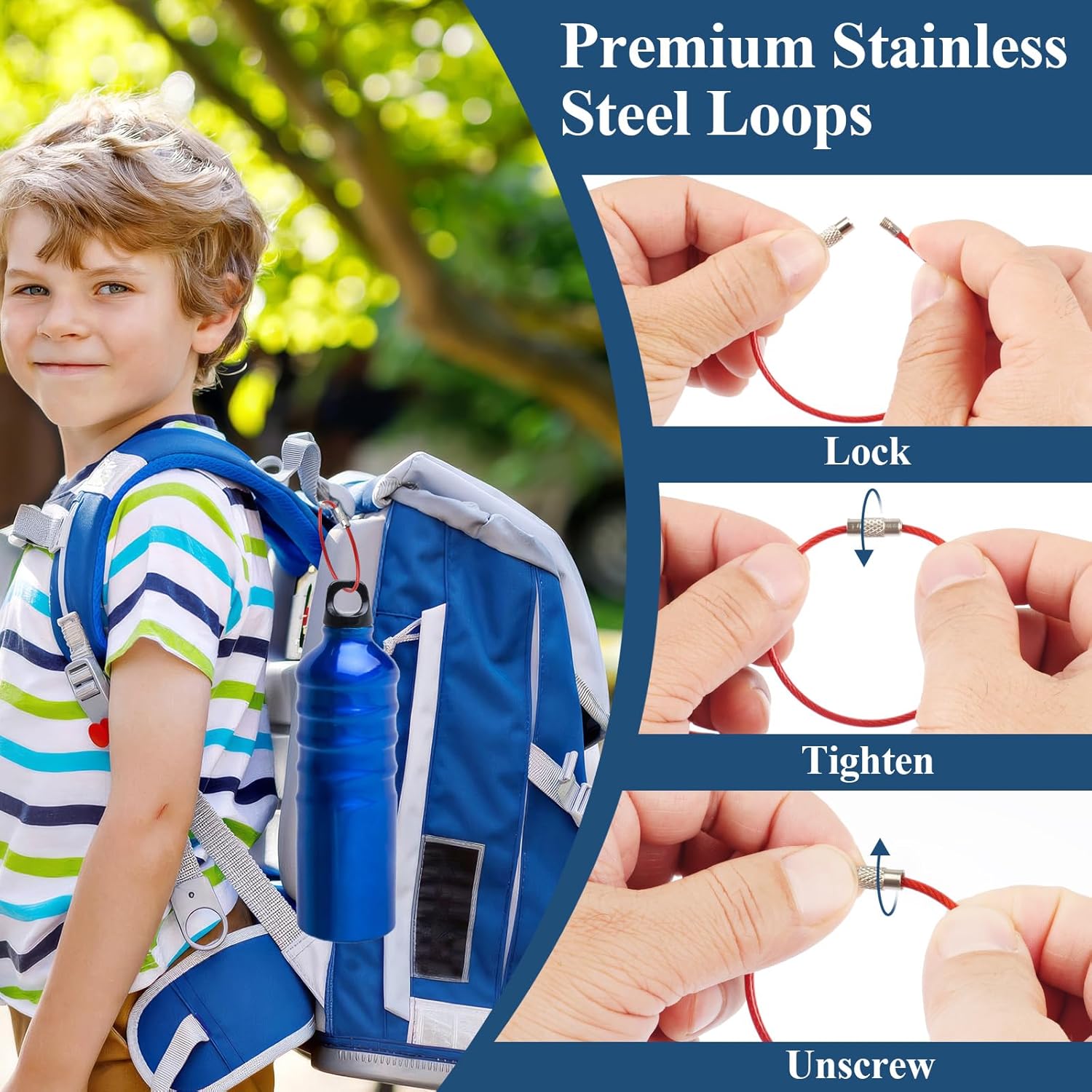
#### **IV. A World of Variety: Types and Specialized Applications**
The basic design of the wire keychain has been adapted and specialized for countless uses, moving far beyond its original purpose.
* **The Classic Retractable Keychain:** The most common type, featuring the coiled spring. Ideal for keeping keys accessible yet tidy.
* **The Fixed-Length Wire Lanyard:** A simple loop of wire with a hook at one end and a lanyard loop at the other. No spring. Used for badges, USB drives, and tools where retraction is not necessary.
* **Heavy-Duty and Industrial Variants:** Constructed from thicker-gauge stainless steel, these are designed for harsh environments—construction sites, warehouses, factories—where they must withstand immense strain, chemicals, and abrasion.
* **Specialty Hooks:**
* **Carabiner-style Hooks:** Incorporating a spring-loaded gate for even more secure attachment, popular with climbers and outdoor enthusiasts.
* **Magnetic Hooks:** Using a powerful neodymium magnet for easy attachment to metal surfaces.
* **Locking Hooks:** Featuring a mechanism to lock the hook closed, preventing accidental detachment.
* **Branded and Promotional Keychains:** Wire keychains are a staple of the promotional products industry. Companies have them custom-coated in brand colors, with logos printed or laser-engraved on a metal or plastic plate attached to the loop. Their practicality ensures long-term visibility for the brand.
* **Niche Applications:** They are used in retail for anti-theft device tags, in electronics for ESD (electrostatic discharge) wrist straps, and in boating for securing equipment. Their utility is limited only by imagination.
#### **V. More Than Metal: The Cultural and Psychological Significance**
Why has the cable key ring endured? Its success is not just practical; it's psychological and cultural.
* **The Psychology of Security:** Keys represent security, property, and identity. Losing them is a profound modern anxiety. The wire keychain, with its secure hook and robust construction, acts as a psychological comfort, a tangible promise that our most important physical tokens of access will remain safe.
* **A Symbol of Utility and Pragmatism:** It is the antithesis of frivolity. It has no unnecessary features. In a world of over-engineered gadgets, its honest functionality is refreshing. It represents a design philosophy where form is dictated purely by function, and that function is executed flawlessly.
* **An Object of Attachment:** We rarely buy a wire keychain for itself. It comes as part of a set with a new car, is given away at a conference, or is bought hastily at a hardware store. Yet, it often outlasts the novelty keychains we intentionally acquire. It becomes a background constant in our lives, a faithful tool that we only notice in its absence.
* **The "Grandfather's Axe" Paradox:** This philosophical thought experiment asks if an object remains the same if all its parts are replaced over time. Many of us have had the same wire keychain for decades. The coating wears off, the spring may loosen, the hook may get slightly bent out of shape, but it is still, fundamentally, *the* keychain. It becomes a personal artifact, its wear and tear a map of our daily journeys.
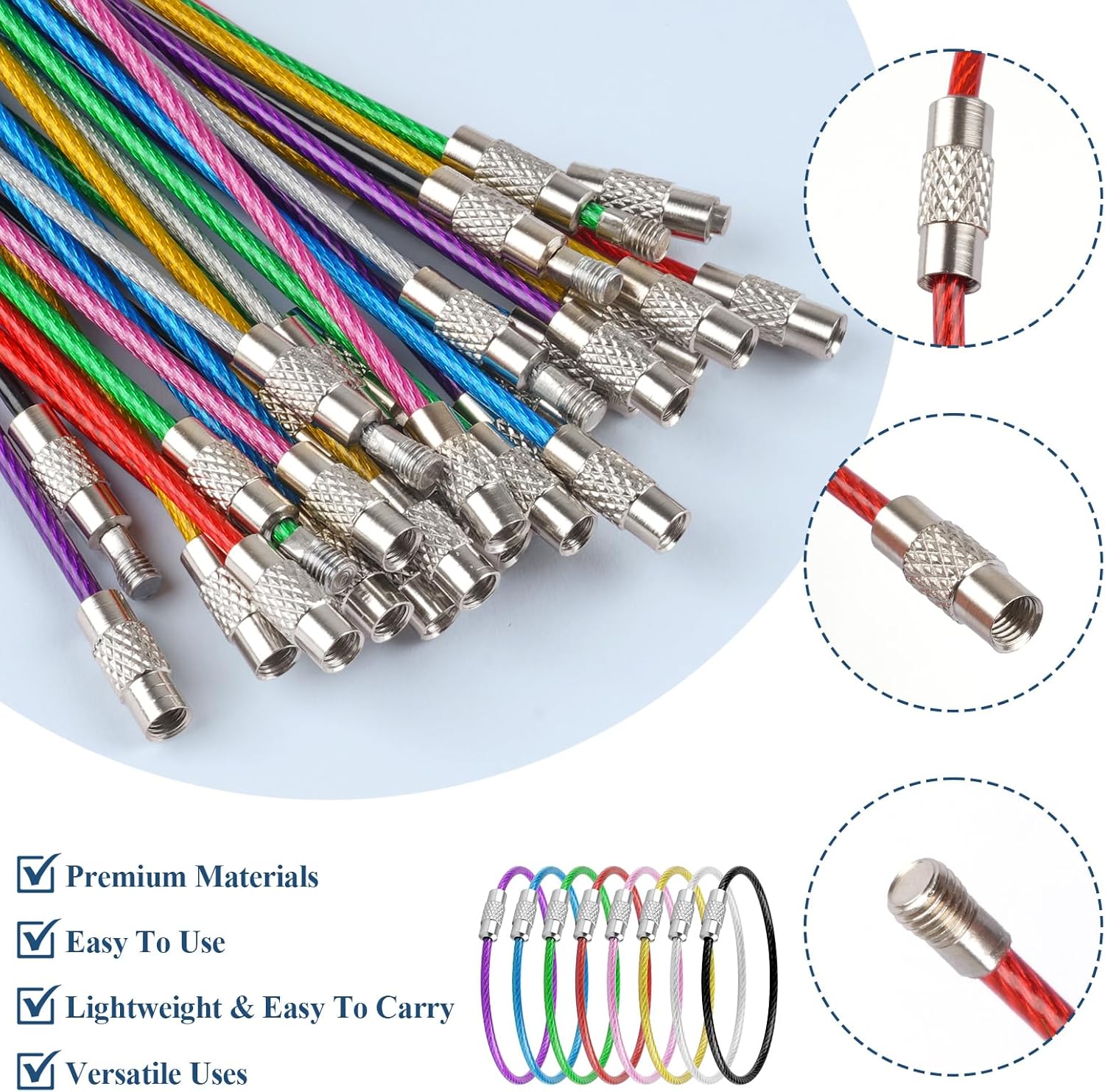
#### **VI. The Wire Keychain in the Digital Age**
One might assume that the rise of keyless entry, digital car keys on smartphones, and smart locks would render the physical keychain obsolete. Paradoxically, the opposite may be true. While traditional keys may diminish, the need to organize and carry small, valuable objects is increasing.
The wire keychain is adapting. It is now just as likely to hold:
* **USB drives** containing sensitive data.
* **RFID tags** for building access.
* **Bluetooth trackers** like Tile or Apple AirTag (the keychain itself becomes the vehicle for the digital tool).
* **Small multi-tools** or flashlights.
Its role is evolving from a mere key retainer to a universal carrier for essential EDC (Every Day Carry) items. Its fundamental design is so versatile that it seamlessly integrates into the digital ecosystem.

#### **VII. Conclusion: An Ode to Lasting Design**
The next time you pick up your keys, take a moment to appreciate the humble wire keychain. That unassuming loop of coated steel is the result of centuries of evolution in key carrying, decades of refinement in metallurgy and manufacturing, and a timeless design principle that less is often more. It is a quiet workhorse, a masterpiece of industrial design, and a perfect example of how the simplest objects, engineered well, can anchor our daily lives and stand the test of time. It is not just a tool for holding keys; it is a symbol of reliability itself, a small, coiled promise that some things, built right, just work.

